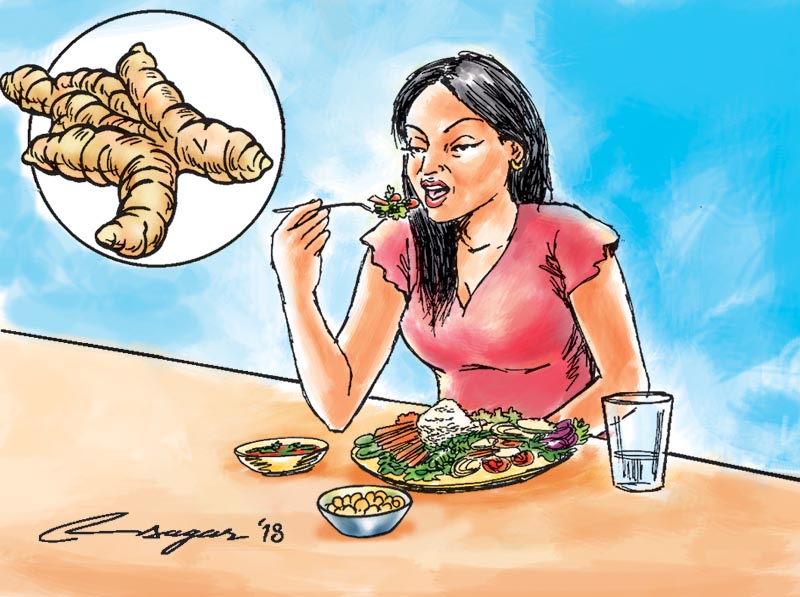A pinch of turmeric: Power-packed medicine
Turmeric (besar) while has its culinary uses, it also carries medicinal properties. It is used to treat inflammation and common cold. Curcumin, a yellow substance in turmeric, is also being researched for cancer prevention and treatment
How many of us remember our grandmas giving us a glass of hot water with turmeric powder when we coughed and sneezed? Or curd with turmeric powder to calm an upset stomach? Our grannies would also make a paste of oil (or ghee) and turmeric powder to put on our wounds. Most of us also remember that we often used to look at what our grandmas were doing with some sort of disdain.
But the fact is our grannies might have been illiterate; they very well knew the medicinal values of the spice that gives our curry or dal its yellow colour. Turmeric has been in used for thousands of years as a spice and medicinal herb.
If I was asked some 20 years ago about the virtue of our traditional and home remedies, I, as a doctor, might have hesitated to speak. It was only after I started participating in seminars and conferences in India and other countries, I gradually understood that we had a vast treasure of such traditional medicines, most of them largely ignored.
Once I attended a lecture by Dr Vandana Shiva, internationally renowned author, physicist and environmental activist, where she emphasised that “if we fail to pay attention to our traditional knowledge, we would surely lose that knowledge some day and scientists from the West might patent that knowledge.”
She talked about her struggle to establish the value of herbal medicines and how India had to fight when some American scientists wanted to patent turmeric. It was quite fascinating. Then I started looking at our own traditional medicines and remedies from a new perspective.
I tried to recall how people in my neighbourhoods and other parts of the country were using herbs to treat various ailments. I gathered books about traditional medicines and herbal remedies. I would read any article that talked about herbs and their healing potentials. There was no Google then and I would read as many books as I could.
It, however, does not mean that people should stop using modern medicines. As a public health specialist, I strongly feel that there should be a balance between modern medicine and ancient knowledge to ensure better health for everyone. The World Health Organisation (WHO) also has recognises the value of home remedies and traditional medicines.
Let’s come back to our power-packed yellow spice—turmeric.
Haldi or besar as we call it, turmeric (Curcuma longa) is a rhizomatous herbaceous flowering plant of the ginger family. It has been in use for 2500 years in Ayurveda as a medicine. In China also, traditional practitioners use turmeric for abdominal pain and pain during menstruation.
Curry and dal in Nepali kitchens are never cooked without adding a pinch of turmeric powder. It not only gives curry or dal its yellow colour, it just works wonders for our health as well. Curcumin, a bright yellow chemical, is what makes turmeric a powerful medicine.
Turmeric is considered one of the most beneficial health supplements. A tablespoon of ground turmeric carries 29 calories, nearly a gram of protein, 2 grams of fibre and 6 grams of carbohydrates. It boosts our immunity, meaning it helps our body fight infection better.
As I mentioned earlier, turmeric is used to treat inflammation, both inside and out, it is also used for treating common cold. Curcumin, the yellow substance in turmeric, is also being researched for cancer prevention and treatment.
When the daughter of a friend of mine in the UK was diagnosed with breast cancer, she was given prompt treatment. Surgery was performed within a month after diagnosis. She was advised by the nutritionists in the hospital to use curcumin and pepper every day—either with water or milk. As she is a vegan (who does not eat meat and any product from animals), she uses turmeric with hot water.
A few days ago I met a woman with scleroderma (a type of skin diseases). As a vegetarian, she had to choose her diet carefully. She has been taking turmeric with honey. It has helped her a lot. During a recent check-up, it was found that her vitamin B12, calcium, vitamin D and blood tests were all normal. There was no need for her to take any tablets or supplements. I believe her food, exercise and combination of turmeric and honey helped her to lead a healthy life.
Curcumin is also believed to have powerful antioxidant effects. Since it protects our body from free radicals which react with important organic substances, such as fatty acids, proteins or deoxyribonucleic acid, resulting in oxidative damage, one of the mechanisms behind aging and many diseases..
Turmeric these days is also used for treatment of rheumatoid arthritis and infections.
Some pharmaceutical companies in the US and India have produced capsules of turmeric. They are expensive, but for the people who cannot use turmeric powder or root in its natural form, this may be a good option. Using turmeric from your kitchen cabinet, hence, is the best way to go.
Many of us now use turmeric to cleanse our skin also. Nowadays, in market there are a lot of products that contain turmeric. I personally use turmeric as a medicine as well as to clean my face. I avoid soaps while bathing. Turmeric powder with honey or curd can make a very good face wash.






